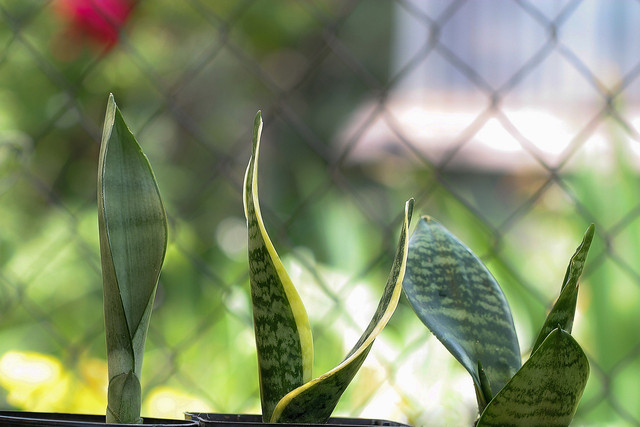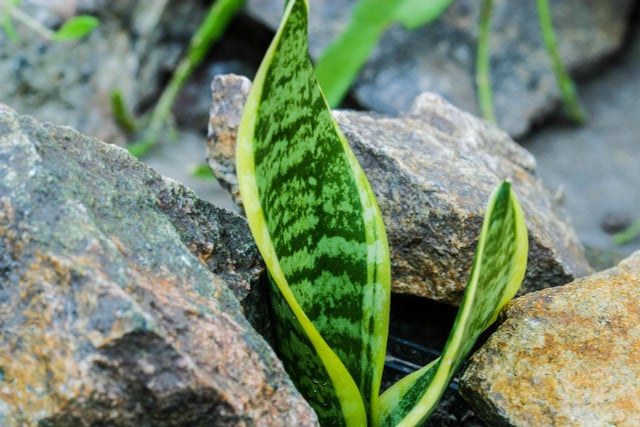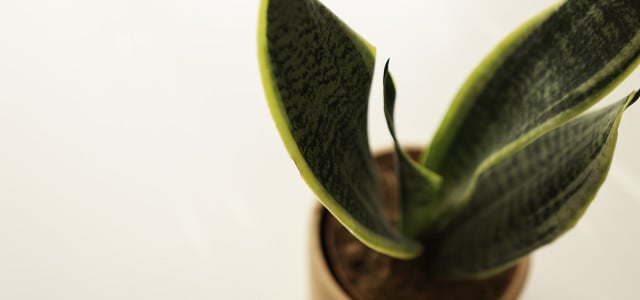Many do not realize that snake plants are part of the succulent family. This means they do very well in dry conditions, and they don’t need to be watered often. Here’s how to avoid having an overwatered snake plant.
The Sansevieria plant, known colloquially as the snake plant, is a type of succulent that needs very little watering. Similar to aloe vera plants, snake plants hold lots of water in their leaves and they thrive in dry soil. Snake plants are often overwatered and tend to die quickly when too saturated. Avoid this by following our tips.
Signs Your Snake Plant is Overwatered

(Foto: CC0 / Pixabay / barbos2514)
- Soft, soggy and mushy leaves are common signs of an overwatered snake plant. Leaves may even start to wrinkle with the weight of holding too much water.
- Drooping leaves or bending leaves also suggest overwatering. However, this may also point to high temperatures or lack of sunlight. Keep this in mind when determining the cause of your plant’s droopy leaves.
- Yellow or darkening leaves suggest too much water. This can manifest as overall discoloration or small yellow spots.
- Leaves falling off means you might be overwatering your plant as well.
- Moldy soil is a definite sign that you are overwatering your snake plant, as fungus grows in moist environments. Moldy soil is a common but fixable problem in many house plants.
- White soil surface can be mold, but it can also be salt crystals, another overwatering symptom.
- Consistently wet soil is a sign of overwatering because snake plants do well in dry soil. If your plant’s soil remains moist for several days, this is a problem.
- Root rot is the worst outcome from overwatering because it can kill your plant. All of the above signs point to possible root rot. Further signs of root rot include loose soil and foul odor. You can remove your plant from the soil to check for yourself if there is root rot.
How to Save an Overwatered Snake Plant



(Foto: CC0 / Pixabay / Olena758)
- Carefully remove the snake plant from the pot.
- Check if the soil is smelly, wet, or moldy. If it is, make sure to dispose of the soil rather than saving it for future planting.
- Brush away the soil from the plant roots and check their condition. Healthy roots should be white and strong looking.
- If there is no root rot and the soil is not smelly, oversaturated or moldy, you can return your plant back to its home and simply leave it to dry out over the next week or so. Be mindful of your watering from now on.
- If there is root rot, however, there is more work to be done. Using clean scissors, start by carefully cutting away rotting roots. Any roots which are brown, slimy or mushy must be cut away to reveal their healthy white sections. Remember, if the roots are too far gone, you can always save your plant through propagation.
- Remove leaves that are beyond repair. Leaves which are drooping heavily, dark in color, or soggy and wet must be removed. This lets your plant conserve its energy to grow back stronger.
- Repot your snake plant in fresh, dry soil meant for cacti or succulents. Use a clean pot with plenty of holes for drainage. If you decide to use the same pot, make sure to first clean the pot with hot water and soap.
- Leave your plant alone to recover from repotting. Do not water it for at least a week.
Taking Care of Your Snake Plant



(Foto: CC0 / Pixabay / Olena758)
- Do not place your snake plant in direct sunlight. Snake plants thrive in lots of indirect sunlight. They can also do well in lower light conditions, so you can test out different areas.
- Water your snake plant properly. Snake plants only need water sporadically. In the summer, you can water your plant every three to four weeks. In the winter, you may only need to water your plant every other month. When you do water your plant, make sure the top few inches of soil are dry first. Water thoroughly so that the moisture reaches the bottom tips of the roots.
- Use pots with drainage holes and place a saucer underneath. Remember to throw out the excess water within ten minutes of watering.
- Use cacti or succulent soil made of a combination of sand and potting soil. You can also include some rocks in your plant pot. This mixture helps drain water quickly so that your snake plant does not get oversaturated.
- Open your windows every day to provide fresh air and ventilation for your snake plant.
Read more:
- Water Propagation for Beginners: A Step by Step Guide
- Caigua Plant Care: When And How To Plant Caigua Fruit
- Keep Your Houseplants Alive: 10 Tips for Healthy Indoor Plants
- Lavender: How to Plant and Care for the Herb
Do you like this post?
3
0
Thank you very much for voting!






